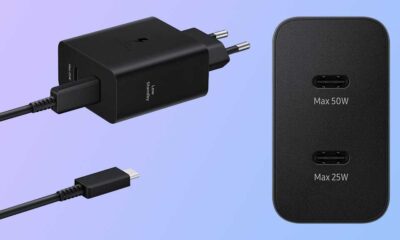Business
Samsung maintains second spot in the global tablet market in Q2 2021: SA
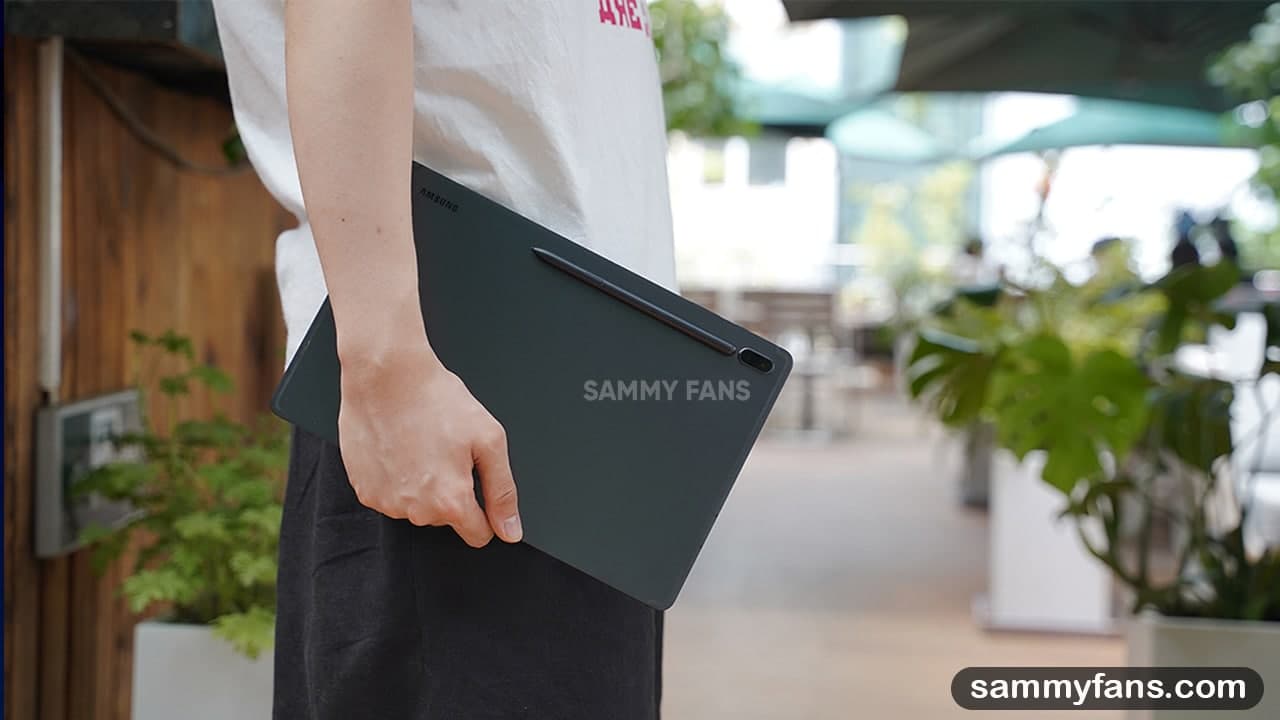
According to a new report by Strategy Analytics, the hybrid’s work with the multi-digit included classes continues to drive tablet demand by mid-2021, as Apple, Samsung, Lenovo, and Amazon have all sent solid results.
However, the supply constraints had a negative impact on some major retailers in meeting high demand ahead of schedule, raising questions about what the second half of the year would bring.
As per the report, the tablet exports were actually flat in Q2 2021 on 45.2 million units compared to Q1 2021 as supply issues began to hit the tablet market faster than expected.
Join Sammy Fans on Telegram
Samsung is leading the segment with its Galaxy Tab S7 including premium features like 5G connectivity, while Lenovo recently released its Tab P11 tab at a lower price than most available on the market. Even Amazon is meeting this huge demand with its new Fire HD 10 Productivity Bundle, which includes Office 365 access.
Apple exports for iOS/iPadOS (for sale) grew by 11% year-on-year to 15.8 million units in Q2 2021, with global market shares rising by 1.8 percent to 35%.

Samsung is the leading Android retailer, shipping 8.2 million tablets in total and growing 19% annually in Q2 2021 in a variety of entertainment and product availability portfolios. The market share increased by 2.1 percent to 18% over the same period.
The export of Lenovo tablets also showed the strongest growth of the year for 67% of retailers reaching 4.7 million units as the retailer shares market share with Huawei outside China. The market share has increased by 3.8 percentage points annually to 10%.

Amazon had a strong quarter due to its multi-day Prime Day sales event in June, with tablet exports growing by 49% annually in Q2 2021 to 4.2 million units. During this period, the market share grew by 2.7 percent to 9%.
Huawei tablet exports decreased annually -57% to 2.1 million units in Q2 2021. The market share fell by 6.7 percent to 5% compared to Q2 2020 as US chipset blocking disrupts Huawei’s production capacity and selling high-quality tablets on the highly competitive Android market.
Business
Samsung leads Q3 smartphone market, Huawei’s entry haunts Apple
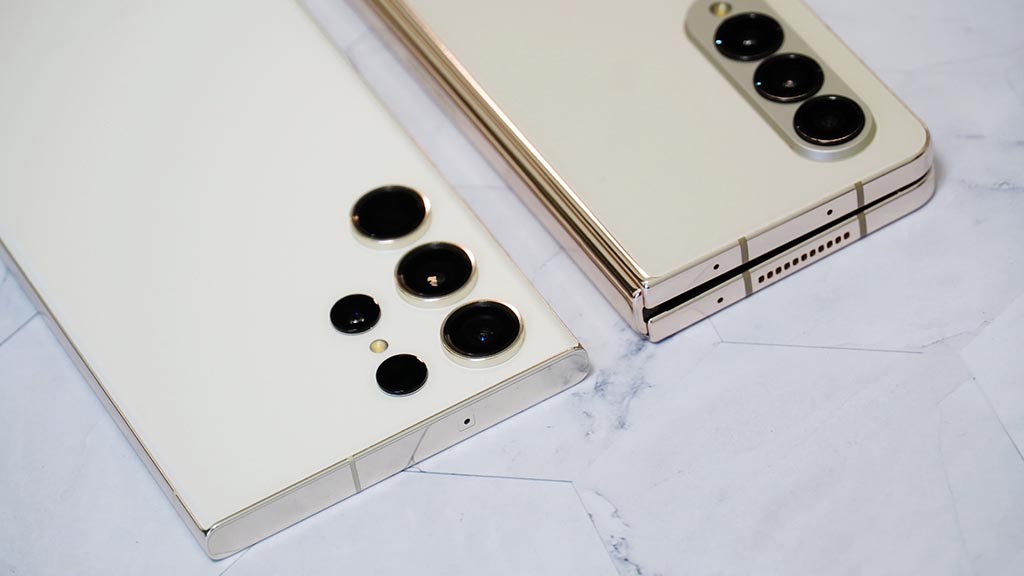
Samsung ranked first in market share in the global smartphone market in Q3, 2023. TrendForce report says that Samsung led the global Q3 smartphone market, recording a market share of 19.5%.
Overall production in the third quarter increased by 11.5% compared to the previous quarter to 60.1 million units. During the same period, Apple’s production increased by 17.9% to 49.5 million, thanks to iPhone 15.
Follow our socials → Google News | Telegram | X/Twitter | Facebook | WhatsApp
Third place was taken by Xiaomi (13.9%), followed by Oppo (12.6%) and Transion (8.6%). 6th place is Vivo (8%). Meanwhile, global smartphone production reached 308 million units, a 13% increase compared to the previous quarter and a 6.4% increase from the previous year.
Huawei’s re-entry into the flagship smartphone market targeting Apple has had a significant impact in China. Huawei is aiming to expand its high-end flagship series, focusing on the Chinese domestic market next year, so Apple “We plan to attack directly”.
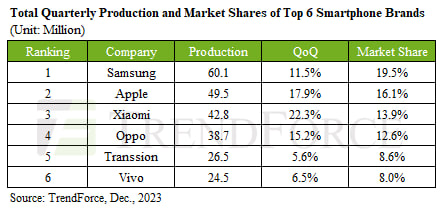
// Source
Business
Underdog phone brand jumped 50%, Samsung and Apple lost ground

In Q3 2023, Samsung and Apple’s market share slightly declined, while an underdog Chinese phone brand appeared on the top 5 chart. In a recent development, Canalys published market research data for the third quarter, revealing Tanssion as the fifth best-seller globally.
According to the info, Samsung and Apple lead total sales with 20% and 17% market share, yet both have fallen from their 22% and 18% levels in 2022. However, Tanssion, the maker of Tecno, Itel, and Infinix phones, climbed from 6% global market share last year to 9% in 2023, a 50% jump.
Follow our socials → Google News | Telegram | X/Twitter | Facebook | WhatsApp
Apart from this, Xiaomi matched last year’s share only by “recovering” from a terrible first half of 2023. At the same time, OPPO has fallen steadily over the past two years, while fellow BBK brand vivo lost the top-5 slot it’s owned for years.
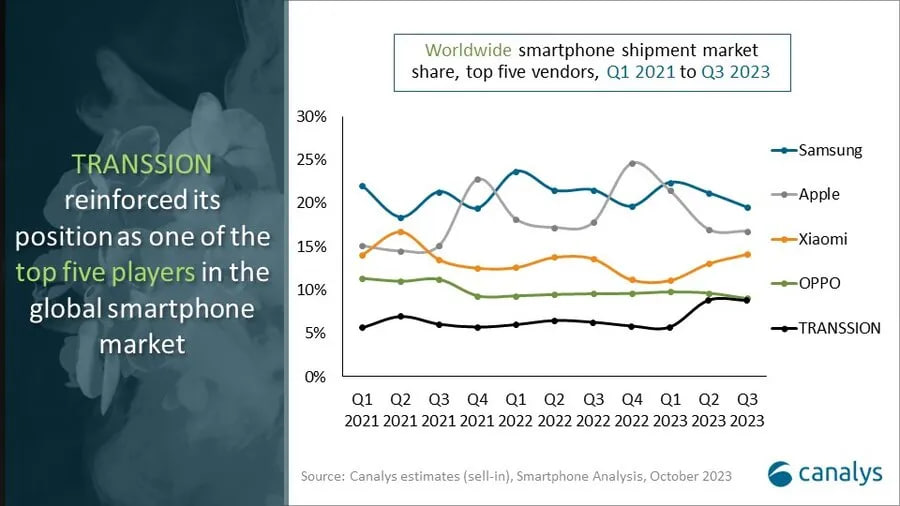
Overall, the global smartphone market underwent a slight drop of 1% in Q3 2023. Bolstered by regional recoveries and new product upgrade demand, the smartphone market recorded a double-digit sequential growth in Q3, ahead of the sales seasons.
Business
Samsung enjoyed 2023’s last victory over Apple?

Recently, research agency Counterpoint Research published their latest analysis. The report reveals that Samsung continued its leadership in the third quarter of 2023, while Apple remained in the second spot. However, both OEMs faced a decline of 1 percent year over year.
According to CR, slower consumer demand is the main factor in the dwindling sales. The market did see a slight 2 percent growth in Q3 compared to Q2, likely driven by last month’s iPhone 15 series launch. Samsung secured 20 percent market share, while Apple grabbed 16 percent sales.
Follow our socials → Google News | Telegram | X/Twitter | Facebook | WhatsApp
The Galaxy A-series was the key driver for the South Korean smartphone maker. Apple came in second with 16 percent of the market while Xiaomi rounded out the top three with its 12 percent share. Oppo (10 percent) and vivo (8 percent) were the remaining brands in the top five charts.

The newly released iPhone 15 series will help Apple score a lead over Samsung in the fourth quarter of the year. The results will arrive by early next year, and it’s expected that the US phone maker could surpass Samsung. Major camera upgrades and USB-C helped Apple register strong sales.







